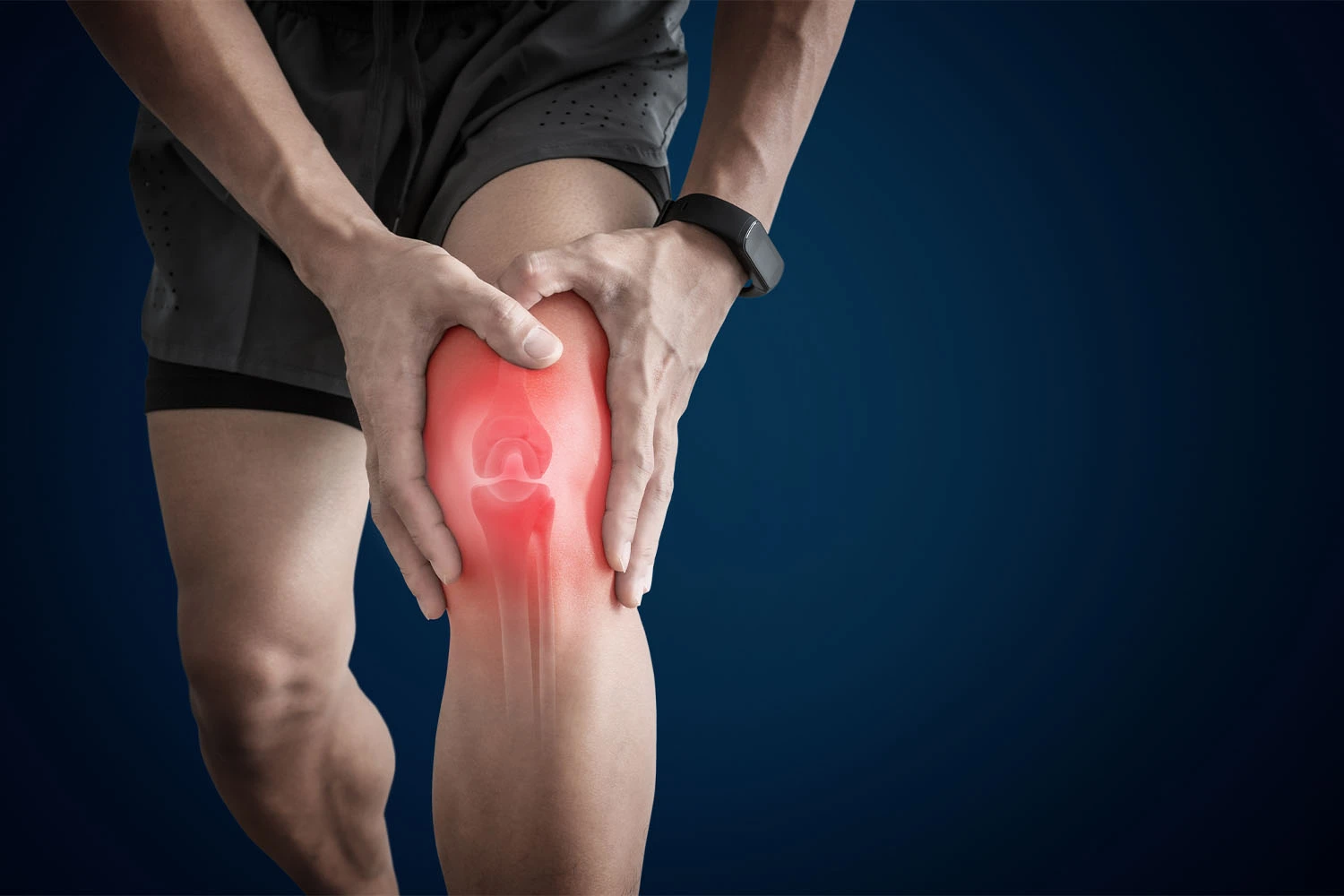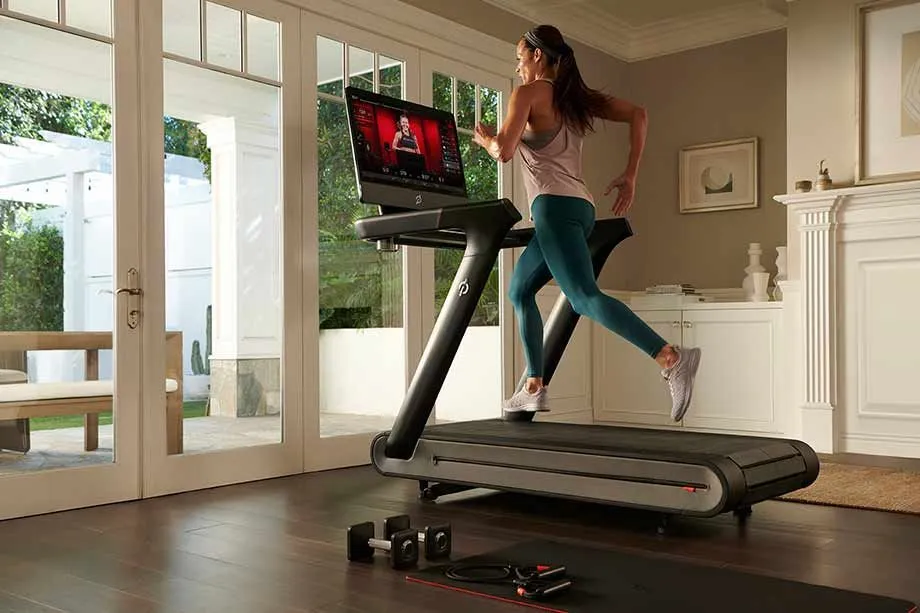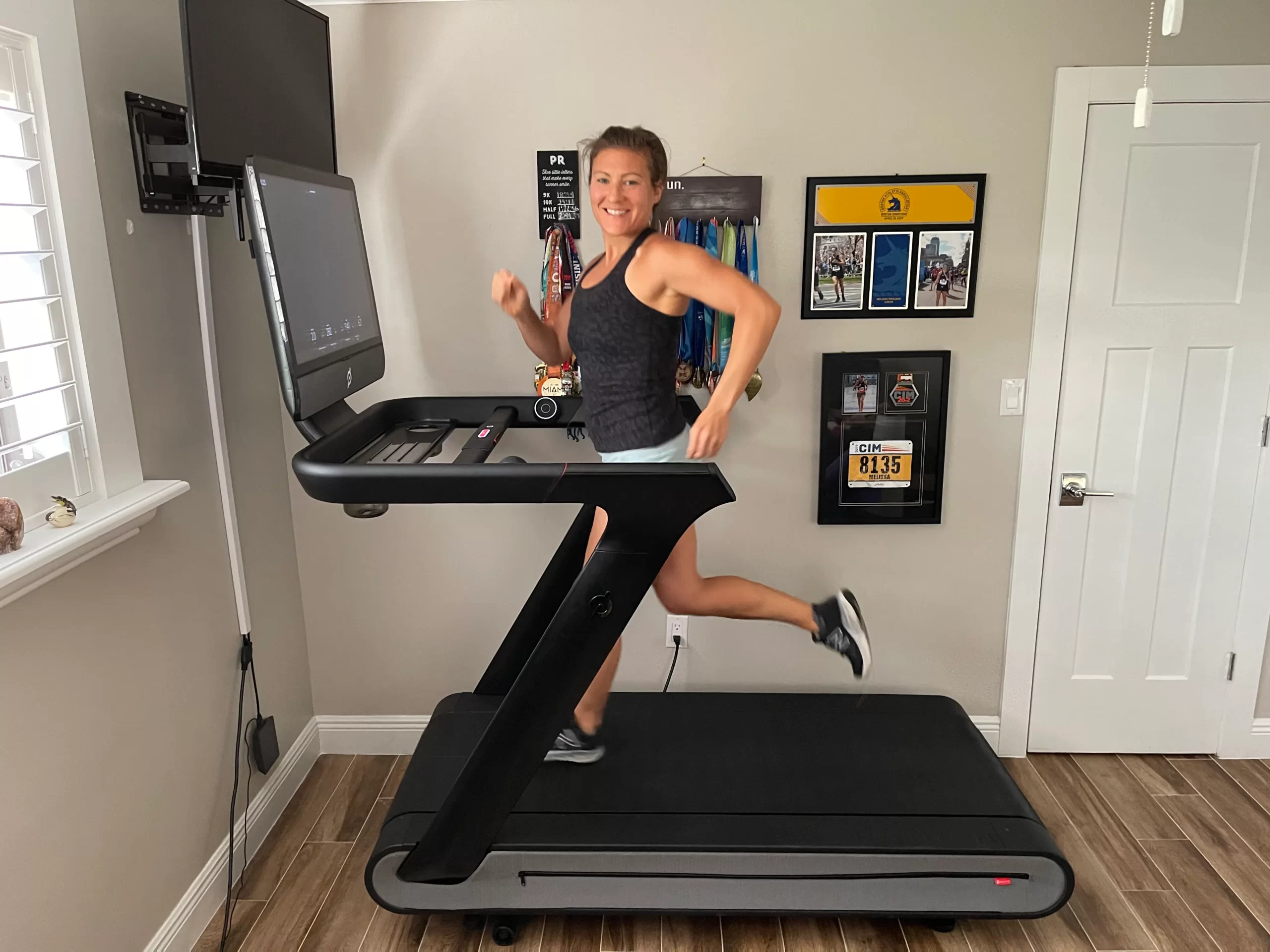As the popularity of at-home fitness equipment continues to rise, the Peloton treadmill has become a go-to for many fitness enthusiasts. However, the question remains for those with bad knees: Is the Peloton tread good for bad knees?
In this article, we will explore the features of the Peloton treadmill, its potential impact on knees, and alternative exercise options for those with knee issues.
Peloton is a company that offers at-home workout equipment, including stationary bikes and treadmills, that stream live and pre-recorded fitness classes to users via a built-in display. Peloton’s innovative technology has revolutionized the fitness industry, but many wonders if their treadmill suits those with bad knees.
We have created a guide that covers: How Many Amps Does a Peloton Treadmill Use?
Understanding Knee Pain
Before diving into whether the Peloton tread is good for bad knees, it’s essential to understand the causes of knee pain. Knee pain can result from various factors, including overuse, injury, or underlying medical conditions such as arthritis.

Individuals with knee pain may experience swelling, stiffness, or limited mobility, which can affect their ability to exercise.
Features of the Peloton Tread
The Peloton Tread offers a range of features that make it an attractive option for at-home fitness enthusiasts. The treadmill comes with a large display screen, a robust sound system, and a variety of pre-recorded and live classes to choose from.
It also offers adjustable incline and speed settings, allowing users to customize their workouts.
Impact of the Peloton Tread on Knees
While the Peloton Tread has many features, it is not a low-impact workout option. Running or walking on a treadmill can put stress on the knees, which may exacerbate knee pain in individuals with existing knee issues.
However, the treadmill’s adjustable incline can help reduce the impact on knees by decreasing the force exerted on the joints.
Benefits of the Peloton Tread for Knee Health

Despite its potential impact on knees, the Peloton Tread can still provide benefits for knee health. The adjustable incline and speed settings can help improve cardiovascular health and increase muscle strength, which can support the knee joints.
Additionally, the treadmill’s live and pre-recorded classes provide guided workouts, ensuring proper form and alignment during exercises.
Alternatives to the Peloton Tread for Knee-Friendly Exercise
For those with bad knees, there are alternative exercise options to consider. Low-impact exercises such as swimming, cycling, or using an elliptical machine can provide cardiovascular benefits without putting stress on the knees. Yoga and Pilates are also excellent options for building strength and improving flexibility.
Exercise Tips for Those with Knee Pain
Regardless of the exercise option chosen, individuals with knee pain should take certain precautions. Before starting any exercise program, it’s essential to consult with a healthcare provider.
Additionally, individuals with knee pain should start slowly and gradually increase the intensity of their workouts. Strengthening exercises that target the muscles supporting the knee, such as the quadriceps and hamstrings, can also be beneficial.
Best Practices for Using the Peloton Tread with Bad Knees

For those with bad knees who want to engage in treadmill workouts using the Peloton Tread, there are some best practices to follow:
1. Proper Warm-Up: Begin each workout session with a dynamic warm-up to loosen up the muscles and joints. Incorporate exercises like leg swings, hip circles, and gentle walking or jogging to prepare the body for the workout ahead.
2. Listen to Your Body: Pay attention to any discomfort or pain during the workout. If you experience knee pain, it’s essential to modify or stop the exercise to avoid further strain or injury. It’s better to be cautious and prioritize your knee health.
3. Adjustable Incline and Speed: Take advantage of the Peloton Tread’s adjustable incline and speed settings. Start with lower inclines and speeds to reduce the impact on your knees. Gradually increase the intensity as your knee tolerance improves.
You Might Also like to Read: Does Peloton Treadmill Have Incline?
4. Supportive Footwear: Ensure you have proper athletic footwear with adequate cushioning and support. This can help absorb shock and reduce the impact on your knees while running or walking on the treadmill.
5. Proper Form: Maintain proper running or walking form to minimize stress on the knees. Keep your posture upright, engage your core muscles, and land softly on your mid-foot rather than your heels. Avoid overstriding, as it can increase knee strain.
6. Cross-Training: Incorporate cross-training activities into your fitness routine. This can help reduce the repetitive impact on your knees. Include exercises like strength training, yoga, or swimming to maintain overall fitness while giving your knees a break.
7. Regular Rest Days: Allow your body and knees to recover by incorporating regular rest days into your workout schedule. This rest period is crucial for muscle repair and reducing the risk of overuse injuries.
8. Consult with a Professional: If you have chronic knee pain or a history of knee injuries, it’s advisable to consult with a physical therapist or sports medicine professional. They can provide personalized guidance and exercises to improve knee strength and stability.
In conclusion, the Peloton Tread can be used by individuals with bad knees, but caution must be taken to ensure knee health and prevent further strain or injury. It’s essential to listen to your body, adjust the settings appropriately, and follow best practices for using the treadmill. However, for those with severe knee issues, alternative low-impact exercises may be more suitable.
FAQs
Can the Peloton Tread aggravate existing knee problems?
While the Peloton Tread can potentially aggravate existing knee problems due to its impact on the joints, adjusting the incline and speed settings and practicing proper form can help minimize stress on the knees.
Are there any specific Peloton classes recommended for individuals with bad knees?
Peloton offers a variety of classes suitable for individuals with bad knees, such as low-impact walking or running classes, strength training, and stretching classes. These classes can provide a challenging workout while being mindful of knee health.
Can using the Peloton Tread improve knee strength?
Yes, using the Peloton Tread can help improve knee strength as it engages the muscles around the knee joint. However, it’s essential to start at a comfortable intensity and gradually increase the workout to avoid overexertion.
Are there any alternative exercises for individuals with bad knees?
Yes, there are alternative exercises for individuals with bad knees, such as swimming, cycling, using an elliptical machine, yoga, and Pilates. These exercises provide cardiovascular benefits without excessive strain on the knees.
Should I consult a healthcare professional before using the Peloton Tread with bad knees?
If you have existing knee issues or concerns, it’s advisable to consult with a healthcare professional before starting any new exercise program, including using the Peloton Tread. They can assess your specific condition and provide personalized recommendations to ensure your safety and optimize your knee health.
Remember, everyone’s body and knee conditions are unique, so it’s essential to listen to your body, be mindful of any discomfort or pain, and make adjustments accordingly. By following the proper techniques and incorporating alternative exercises when needed, you can maintain an active lifestyle and work towards your fitness goals while taking care of your knees.
So, if you’re wondering whether the Peloton Tread is good for bad knees, the answer is that it can be suitable with the right precautions and adjustments. Just remember to prioritize your knee health, practice proper form, and consult with a healthcare professional if needed. With a balanced approach and a focus on overall wellness, you can continue your fitness journey while keeping your knees happy and healthy.
Thanks For Visiting!
Related Articles:
